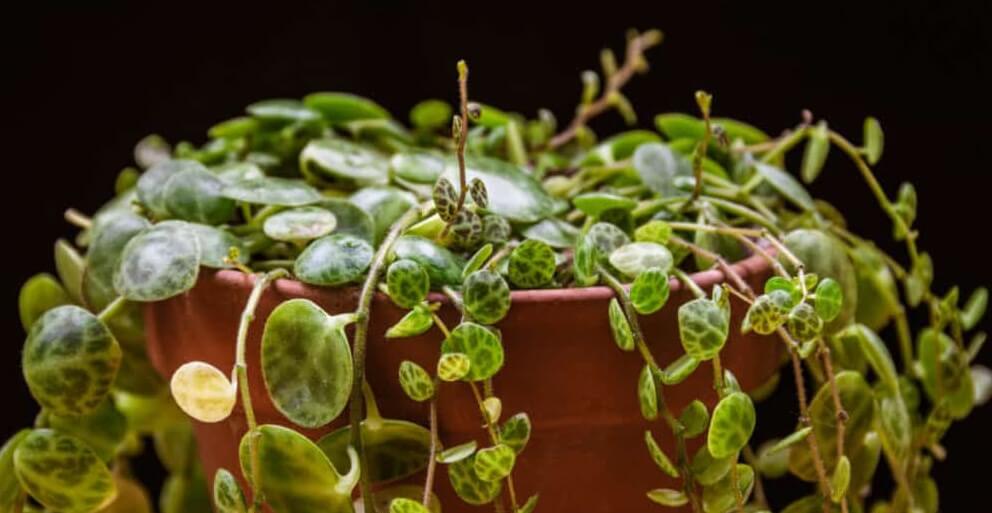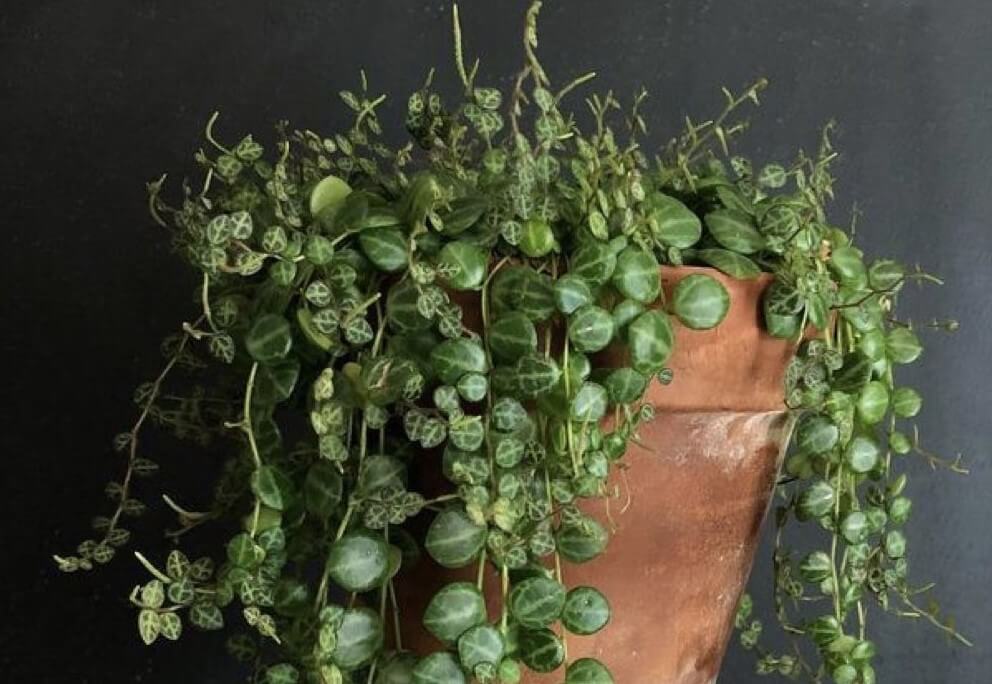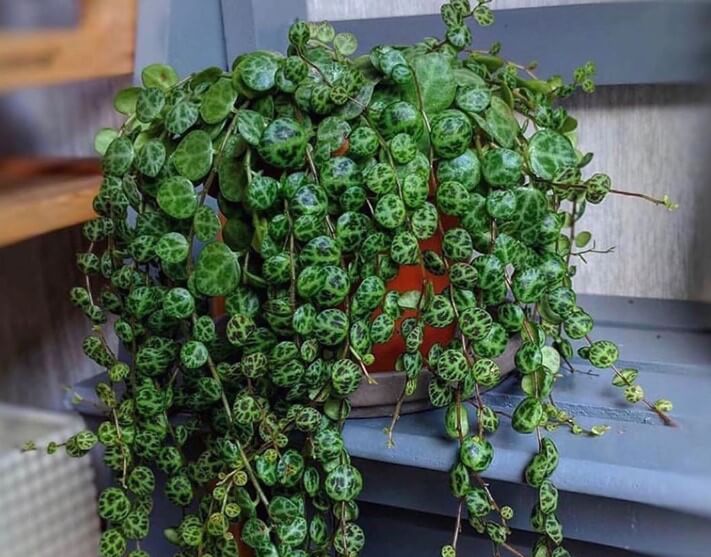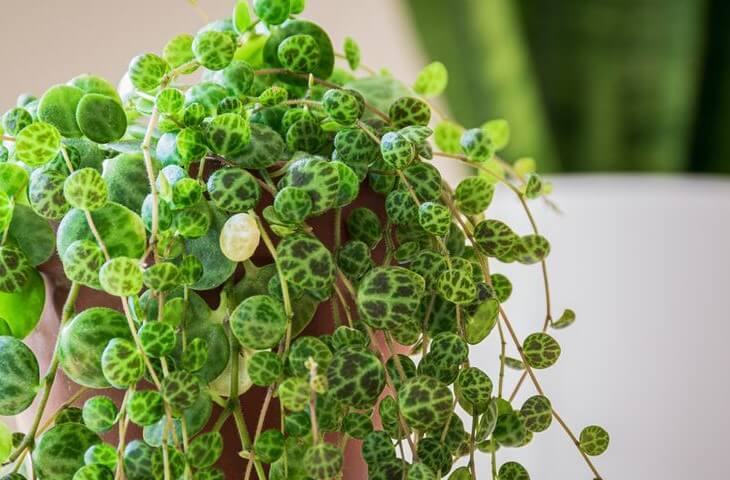String of turtles terrarium – The string of turtles, also known as Peperomia prostrata, is a popular houseplant. It charms and gains attention for its use in terrariums. This plant is from South America and has a special pattern on its leaves. It grows in tropical regions.
Caring for a string of turtles in a terrarium is relatively straightforward. This plant grows well in warm, humid conditions. It needs bright, indirect light, like its rainforest home. To prevent root rot, use the correct potting mix, water properly, and ensure good airflow.
In this blog post, you will find everything you need to know about caring for a string of turtles in a terrarium. It includes information on choosing, planting, and taking care of them. With proper care, this “turtle vine” will create a lush backdrop or carpet in your enclosed garden. This guide will help you set up and care for your string of turtles terrarium. We’ll cover lighting, watering, and troubleshooting.

Setting Up the Terrarium
To create a string of turtles terrariums, start by picking the right glass container or jar. Select a container that is 6–12 inches tall with an opening wide enough to easily access the interior. Small apothecary jars, hurricane vases, fish bowls, or bubble bowls work well. Make sure the container has a wide base for stability
Next, add a 2-3-inch drainage layer at the bottom. This can consist of pebbles, gravel, or expanded clay pellets. The drainage layer allows excess water to flow out of the soil mix above
On top of the drainage layer, add a 2-4-inch layer of an appropriate well-draining soil mix. A good blend is 2 parts peat moss or coco coir mixed with 1 part perlite or vermiculite. You can also purchase premixed blends made for terrariums
The soil gives plants nutrients. Perlite and vermiculite helps drainage. Add hardscape elements for interest and support for the string of turtles. Small pieces of driftwood, rocks, or cork bark work well. Lean pieces against the sides of the container or partially bury them in the substrate. You can also include moss-covered sticks or rocks
Once the hardscape is arranged, plant your string of turtles cuttings. Gently remove the cuttings from their pots and spread them out over the soil surface. Bury the ends slightly in the substrate to encourage rooting. Allow the stems to trail over hardscape pieces. Plant 3-5 cuttings to achieve a full look
Finally, if desired, top the soil with a thin layer of sheet moss or dried leaf litter to help retain moisture. Mist the terrarium to water it initially. Put your string of turtles terrarium in a well-lit spot. Watch it grow and enjoy!
Caring for String of Turtles in the Terrarium

Light
Turtles need bright, indirect light like in a rainforest understory. Direct sun should be avoided as it can scorch the leaves. Place the terrarium near an east or west facing window where it will get 4-6 hours of gentle sunlight
If you put it in a south facing window, filter the light. If there isn’t enough natural light, use a grow light. Use a full spectrum LED grow light and place it 6-12 inches above the terrarium. Keep the light on for 12-14 hours per day
Monitor the light intensity and adjust as needed based on the plant’s growth and color.
Temperature & Humidity
String of turtles prefer warm temperatures between 65-80°F (18-27°C)
This makes them well-suited to most indoor environments. However, they should be kept away from drafty areas or windows in cold weather. Avoid allowing the plants to get too cold, as temperatures below 50°F (10°C) can damage them
If your home’s temperature changes a lot, using a small heating mat can keep your turtles warm.
Make sure the leaves don’t touch the heating mat because it can burn them. These plants like high humidity. Ideal humidity for string of turtles is 60-90%
They come from the tropical rainforest. You can add humidity to your home in a few ways.
-
Use a humidifier near the plants to raise humidity levels in the surrounding air. Look for small ultrasonic or evaporative humidifiers that can safely run continuously.
-
Group plants together to create a localized humid microclimate. The transpiration from multiple plants helps increase humidity.
-
Place pots on pebble trays filled with water. The evaporating water from the tray will provide humidity.
-
Mist the plants daily using a spray bottle and distilled water. This helps replicate tropical rainfall.
-
Cover plants with a glass cloche or terrarium to contain moisture. Make sure to open periodically for airflow.
Regular misting or using a humidifier are often the easiest methods to maintain the ideal 60-90% humidity range. Monitor humidity with a hygrometer and adjust your approach as needed
Proper humidity helps the string of turtles grow faster and avoid potential issues like leaf curling.
Watering

String of turtles prefer their soil to dry out slightly between waterings. Allow the top inch or two of soil to become dry before watering again
To keep your plants healthy, water them every 7-14 days, depending on the conditions. When watering, pour water into the pot until it drains from the bottom holes.
Make sure the soil is completely wet, but don’t add too much water. Be careful not to wet the leaves. The foliage is prone to rot if it remains wet
Consider bottom-watering instead by placing the pot in a bowl of water for 10-20 minutes until the top of the soil is damp. After bottom-watering, remember to pour out any extra water in the saucer. In terrariums with high humidity, the soil keeps moisture longer, so water less often, maybe every 2-3 weeks. Check the soil before watering and only add water when the top layers are dry
Signs your string of turtles needs water include:
-
Soil is dry 1-2 inches down
-
Leaves appear wrinkled or curled
-
Pot feels light when lifted
Avoid overwatering which can lead to root rot. Signs of overwatering include
-
Leaves turning yellow or brown
-
Soft, mushy leaves
-
Mold growth on soil
-
Foul odor from pot
To prevent issues, keep the soil mix well-draining and water only when partially dry. Adjust your watering schedule based on the plant’s needs in your environment.
Fertilizer
Applying fertilizer helps string of turtles grow well and prevents nutrient problems.
Feed your string of turtles during the active growing season in spring and summer. Use a balanced liquid houseplant fertilizer, diluted to half strength. Look for a formula with equal parts nitrogen, phosphorus, and potassium such as 10-10-10
Fertilize once every 2-4 weeks during the growing season. Reduce application to once a month in fall. Do not fertilize at all during the winter when growth slows down
When applying fertilizer
-
Remember to read the directions on the fertilizer package for how much to use and when.
-
Fertilize right after watering so the nutrients can absorb into the moist soil.
-
Avoid getting fertilizer solution on the leaves.
-
Flush the soil with plain water every few months to prevent buildup of excess salts.
Signs your string of turtles may need more fertilizer include
-
Slow or stunted growth
-
Pale leaves
-
Leaf drop
-
Loss of leaf coloration/pattern
However, overfertilizing can also damage plants. Signs of fertilizer burn include brown leaf tips and margins. If this happens, decrease the amount or frequency of fertilizer. To keep your turtles healthy, use the right fertilizer and apply it correctly during the growing season. Adjust your regimen based on the plant’s needs.
Pruning & Propagation
Pruning your string of turtles is not strictly necessary, but it can help maintain the plant’s shape and fullness. Here are some tips for pruning
-
Use clean, sharp scissors or pruning shears to make cuts. Make cuts just above a leaf node.
-
Prune off any dead, damaged, or diseased stems. This keeps the plant healthy.
-
Prune overly long vines that are growing out of control. This encourages fullness.
-
Pinch off growing tips to promote bushier growth with more side shoots.
-
Limit pruning to 1/3 of the plant at a time to avoid stressing it.
String of turtles propagates easily from cuttings
-
Take 3-4 inch cuttings from a healthy parent plant in spring or summer.
-
Remove the bottom 1-2 leaves and let the cut end dry for 1-2 days.
-
Stick the cut end in well-draining potting mix. Keep it evenly moist.
-
Roots and new growth will emerge in 4-8 weeks.
-
Once rooted, transplant to a small pot with drainage holes.
You can also propagate in water
-
Take 3-4 inch cuttings and remove lower leaves as before.
-
Place the cut end in water, changing the water weekly.
-
Roots will begin to grow after about 3 weeks in ideal conditions.
-
Plant in soil once substantial roots have formed.
With proper propagation, the cuttings will grow into full trailing plants. This lets you easily expand your string of turtles collection!
